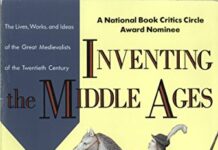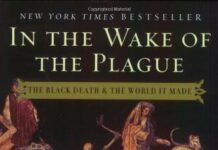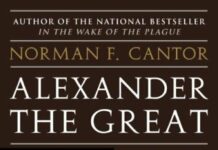
Ebook Info
- Published: 1995
- Number of pages: 224 pages
- Format: PDF
- File Size: 1.28 MB
- Authors: Norman F. Cantor
Description
A fascinating look at life in the Middle Ages that focuses on eight extraordinary medieval men and women through realistically invented conversations between them and their counterparts.
User’s Reviews
Editorial Reviews: Review “Stimulating reading….A vivid exercise in narrative.””–Kirkus Reviews””A tour-de-force…I simply cannot imagine a more effective and compelling introduction to medieval civilization.”–Arthur H. Williamson, California State University, Fresno About the Author Norman F. Cantor was Emeritus Professor of History, Sociology, and Comparative Literature at New York University. His many books include In the Wake of the Plague, Inventing the Middle Ages, and The Civilization of the Middle Ages, the most widely read narrative of the Middle Ages in the English language. He died in 2004.
Reviews from Amazon users which were colected at the time this book was published on the website:
⭐This book by respected medievalist historian Norman Cantor is necessarily a very controversial one. I think its aim is to give the lay reader information about what the intellectual discussions were about at every stage of the history of the Middle Ages, from a point of view that is understandable by non-specialists. So, clearly the book is not intended for readers with a deep knowledge and understanding of the subject, but for people curious to learn the basic facts and debates of each age concerned. The book portraits the lives of eight distinguished persons, conveying imaginary dialogues between them and the people who surrounded them. Cantor uses every conceivable advantage of hindsight, and so, deliberately, he falls into anachronisms, like people calling their own time “the Middle Ages”, and applying terms and concepts that would only appear much later (like the term “Renaissance”). This has brought him many criticisms, accurate ones, but I think oblivious to the nature of the book. Cantor’s purpose seems to be not to actually depict with accuracy his characters and situations, but to illustrate the reader about which were the most important debates at every stage, with a language and words accesible for us. And I think he achieves his aim with a sense of humor and clarity. The eight principal characters, as well as their interlocutors, are most interesting: Helena Augusta, the Jewish ex-prostitute who became the mother of Emperor Constantine, who sustains a conversation, at an inn in Palestine, with Eusebius, Bishop of Cesarea, one of the first historians of Christiantiy, and with the Greek host and a Jewish tradesman.Then St. Augustine discusses with a Donatist friend about the dilemmas of the Church at the time: universality (inclusion of sinners into the Church) vs. purity (the Church as an exclusive club of saints).The third chapter is about Alcuin of York, on the same dilemma in a different context. Moving forward in time, Humbert of Lorraine talks about State-Church relations, stressing the need to free the Church from the reign of the Sacred Roman-Germanic Empire. Eleanor of Aquitaine, about the situation of women in society and Church, the same subject upon which later Hildegard from Bingen would think (and act). Robert Grosseteste, the founder of Oxford University, about corruption in the Papacy and the option of Popular Church as an alternative. Finally, a roundtable presided over by John of Bedford, Henry V’s brother (after the latter’s victory over the French) and British Regent of France, about the renaissance of classical Greco-Roman culture vs. Medieval English culture, plus the role of the Rule of Law. I found it to be an excellent and readable introduction to the culture of the Middle Ages.
⭐Norman Cantor’s Medieval Lives reminds me of my opinion that the greatest way to learn about history is to learn about people. History itself is shaped by the decisions that our ancestors made, whether good or bad. And when we learn about those who shaped the past, we understand where our habits, opinions, and world-views originated.Cantor does a good job writing in the medieval mindset, helping us understand how people thought during the Middle Ages and why they acted the way they did. Perhaps Cantor’s greatest achievement in Medieval Lives is the way he weaves eight separate biographies into one flowing narrative. Several themes in the book, including treatment of the Jews in Medieval Europe, the rise of Christendom, and the writings of Augustine are featured in every chapter. Speaking of Augustine, his biography in chapter two is probably the highlight of the book; capturing the image of the influential bishop while sowing the seeds for several key themes in the rest of the book. Overall, I would say that I learned a lot from Cantor’s writings. In particular, I learned about why there were always tensions between the Church and the Jews during the Middle Ages. Other things I learned included relations between Church and State, the treatment of women, and the development of the Scholastic movement.However, this book is not perfect. Although I like the concept of writing hypothetical conversations between historical figures, the dialogue at times feels too contemporary, relying too much on modern slang and terminology (Including refering to the Renaissance by name, even though the term originates from the late 19th century.) And I don’t always agree with Cantor’s opinions expressed through his characters (Particularly claiming Saint Paul restricted opportunities for women in the church.) But never the less, this book helped me learn a lot about the history of Medieval Europe. I would recommend this book as a starting point for any person who is interested in learning about the Middle Ages.
⭐Those who gave this book a bad review do not have a clue. Ignore them.Until I got a clue, I did not like this book, either. Then I realized I was judging it from a modern viewpoint, and the light went on. These are “Medieval” lives.This is a work of creative genius by one of the leading experts on the Medieval period. To understand it, read The Discarded Image, by C. S. Lewis, then ask, “How would someone with a Medieval mindset write about important people?” Here is your clue: They would not write a biography; they would not care about “facts”.Read this book and enjoy the “you are there” sense in a way you may have never experienced before.
⭐I found extremely interesting the live description of those eight medieval men and woman. Writen in first person, it contains a personal description of how they probably felt and why they were as they were. It requires some -or perhaps more than some- knowledge of ancient and medieval history to understand the background of those lives. But if the reader has that knowledge he will enjoy the book thoroughly.
⭐I was disappointed in this book by Norman Cantor. Sorry – I can’t take the imaginary conversations as authentic history and that is what I expected from this author.
Keywords
Free Download Medieval Lives: Eight Charismatic Men and Women of the Middle Ages in PDF format
Medieval Lives: Eight Charismatic Men and Women of the Middle Ages PDF Free Download
Download Medieval Lives: Eight Charismatic Men and Women of the Middle Ages 1995 PDF Free
Medieval Lives: Eight Charismatic Men and Women of the Middle Ages 1995 PDF Free Download
Download Medieval Lives: Eight Charismatic Men and Women of the Middle Ages PDF
Free Download Ebook Medieval Lives: Eight Charismatic Men and Women of the Middle Ages



